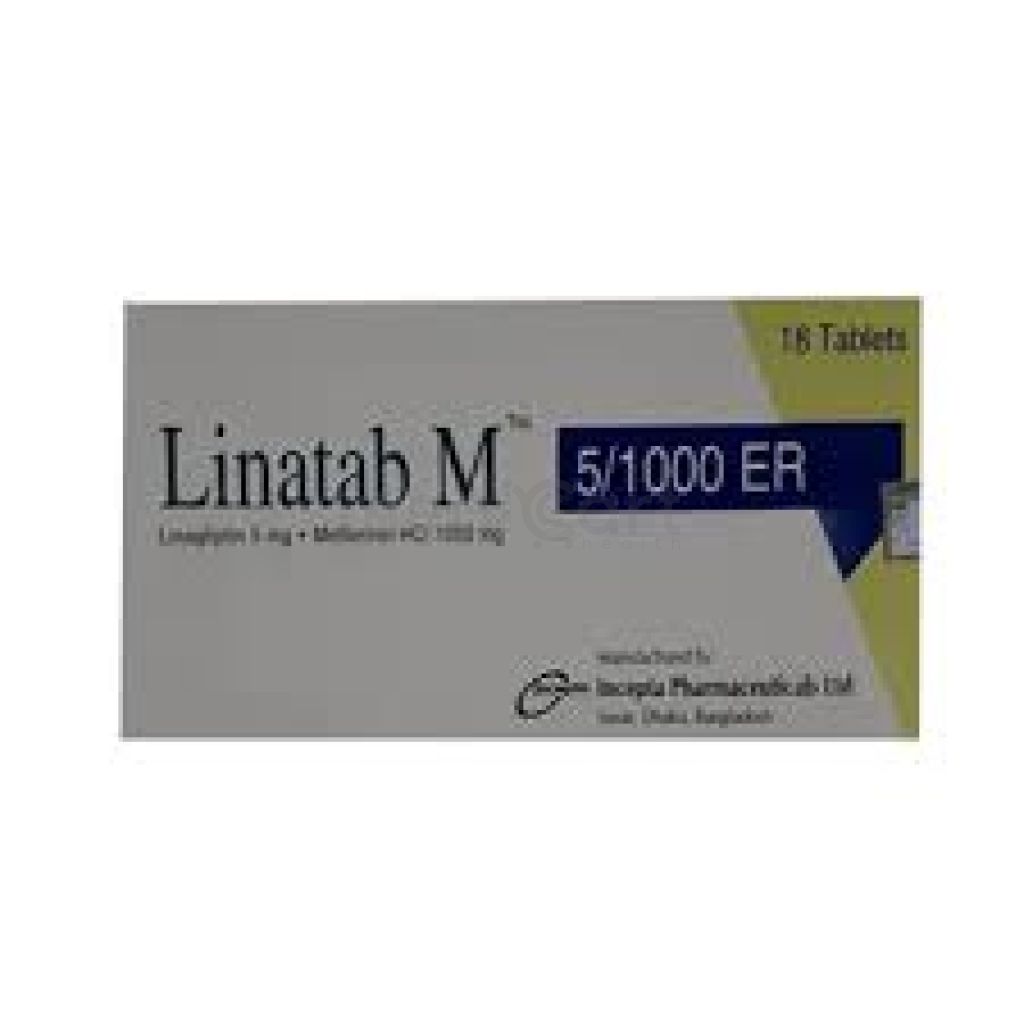

Linatab .5/1000 ER - 5mg
Tablet* Delivery will be done in Dhaka city only.
Alternative Product
More Information About - Linatab .5/1000 ER - 5mg
Description
Generic Name
Linagliptin
Precaution
Concomitant use w/ sulphonylureas which are known to cause hypoglycemia; dose reduction of sulphonylureas may be considered. May affect ability to drive or operate machinery. Childn. Elderly >75 yr. Pregnancy & lactation. Lactation: Unknown whether distributed in breast milk; caution advised
Indication
Type 2 Diabetes Mellitus
Contra Indication
Patients with a history of a hypersensitivity reaction to linagliptin, such as urticaria, angioedema, or bronchial hyperreactivity. Type 1 DM. Treatment of diabetic ketoacidosis.
Dose
N/A
Side Effect
1-10% Nasopharyngitis (4.3%),Hyperlipidemia (2.8%; with pioglitazone),Cough (2.4%; with metformin and sulfonylurea),Hypertriglyceridemia (2.4%; with sulfonylurea),Weight gain (2.3%; with pioglitazone), Hypoglycemia 7.6% overall incidence, 22.9% incidence compared with placebo plus metformin and a sulfonylurea Incidence similar to placebo with monotherapy or combined with metformin or pioglitazone
Pregnancy Category
Name : Not Classified
Description
FDA has not yet classified the drug into a specified pregnancy category.Mode of Action
Dipeptidyl peptidase 4 (DPP-4) inhibitor; increases and prolongs incretin hormone activity which is inactivated by DPP-4 enzyme. Incretins regulate glucose homeostasis by increasing insulin synthesis and release from pancreatic beta cells and reducing glucagon secretion from pancreatic alpha cells .
Interaction
Increased risk of hypoglycaemia when used w/ an insulin secretagogue (e.g. sulfonylurea) or insulin. Plasma concentration of linagliptin may be decreased by strong inducers of P-glycoprotein (e.g. rifampicin) and may be increased by strong P-glycoprotein inhibitors (e.g. ritonavir).
Pregnancy Category Note
Pregnancy The limited data in pregnant women are not sufficient to inform of drug-associated risk for major birth defects and miscarriage; there are risks to the mother and fetus associated with poorly controlled diabetes in pregnancy In animal reproduction studies, no adverse developmental effects were observed when linagliptin was administered to pregnant rats during period of organogenesis at doses similar to maximum recommended clinical dose, based on exposure Poorly controlled diabetes in pregnancy increases maternal risk for diabetic ketoacidosis, pre-eclampsia, and delivery complications; poorly controlled diabetes increases fetal risk for major birth defects, still birth, and macrosomia related morbidity Lactation There is no information regarding presence of linagliptin in human milk, the effects on breastfed infant, or effects on milk production; however, linagliptin is present in rat milk; developmental and health benefits of breastfeeding should be considered along with mother’s clinical need for therapy and any potential adverse effects on breastfed child from therapy or from underlying maternal condition
Adult Dose
Oral Type 2 diabetes mellitus Adult: 5 mg once daily. Indicated for adults with diabetes mellitus type II along with diet and exercise to lower blood sugar; may be used as monotherapy or in combination with other common antidiabetic medications including metformin, sulfonylurea, pioglitazone, or insulin. Elderly: No dose adjustment is necessary based on age. Hepatic or renal impairment: No dosage adjustment required.
Child Dose
Safety and efficacy not established
Renal Dose
Renal Impairment: No dose adjustment.
Administration
May administer with or without food
Disclaimer
The information provided herein are for informational purposes only and not intended to be a substitute for professional medical advice, diagnosis, or treatment. Please note that this information should not be treated as a replacement for physical medical consultation or advice. Great effort has been placed to provide accurate and comprehensive data. However, Medicart along with its authors and editors make no representations or warranties and specifically disclaim all liability for any medical information provided on the site. The absence of any information and/or warning to any drug shall not be considered and assumed as an implied assurance of the Company.









